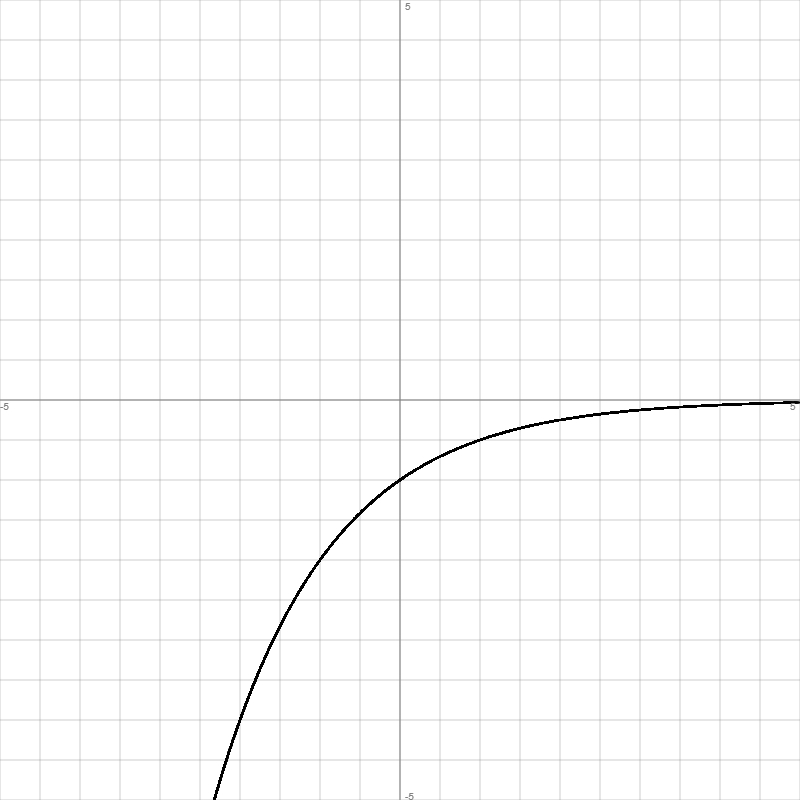
www.michael-buhlmann.de
Funktion: f(x) = -0.5x, Df = R, Wf = (-∞; 0), reelle Funktion, x -> -∞: f(x) -> -∞, x -> +∞: f(x) -> 0 = y als Grenzkurve ->
| Wertetabelle: | |||||
| x | f(x) | f'(x) | f''(x) | f'''(x) | Besondere Kurvenpunkte |
| -5 | -32 | 22.18 | -15.37 | 10.62 | |
| -4.5 | -22.6274 | 15.68 | -10.87 | 7.51 | |
| -4 | -16 | 11.09 | -7.69 | 5.31 | |
| -3.5 | -11.3137 | 7.84 | -5.44 | 3.75 | |
| -3 | -8 | 5.55 | -3.84 | 2.65 | |
| -2.5 | -5.6569 | 3.92 | -2.72 | 1.88 | |
| -2 | -4 | 2.77 | -1.92 | 1.33 | |
| -1.5 | -2.8284 | 1.96 | -1.36 | 0.94 | |
| -1 | -2 | 1.39 | -0.96 | 0.66 | |
| -0.5 | -1.4142 | 0.98 | -0.68 | 0.47 | |
| 0 | -1 | 0.69 | -0.48 | 0.33 | Schnittpunkt Sy(0|-1) |
| 0.5 | -0.7071 | 0.49 | -0.34 | 0.23 | |
| 1 | -0.5 | 0.35 | -0.24 | 0.17 | |
| 1.5 | -0.3536 | 0.25 | -0.17 | 0.12 | |
| 2 | -0.25 | 0.17 | -0.12 | 0.08 | |
| 2.5 | -0.1768 | 0.12 | -0.08 | 0.06 | |
| 3 | -0.125 | 0.09 | -0.06 | 0.04 | |
| 3.5 | -0.0884 | 0.06 | -0.04 | 0.03 | |
| 4 | -0.0625 | 0.04 | -0.03 | 0.02 | |
| 4.5 | -0.0442 | 0.03 | -0.02 | 0.01 | |
| 5 | -0.0312 | 0.02 | -0.02 | 0.01 | |
| Graph: | |||||
 | |||||
Abkürzungen: Df = (maximaler) Definitionsbereich, f(x) = Funktion, f'(x) = 1. Ableitung, f''(x) = 2. Ableitung, f'''(x) = 3. Ableitung, H = Hochpunkt, L = Lücke, N = Nullstelle, P = Polstelle, R = reelle Zahlen, S = Sprungstelle, T = Tiefpunkt, W = Wendepunkt, WS = Sattelpunkt, Wf = Wertebereich, {.} = ein-/mehrelementige Menge, [.; .] = abgeschlossenes Intervall, (.; .) = offenes Intervall, [.; .), (.; .] = halboffenes Intervall, ∞ = unendlich.
Bearbeiter: Michael Buhlmann